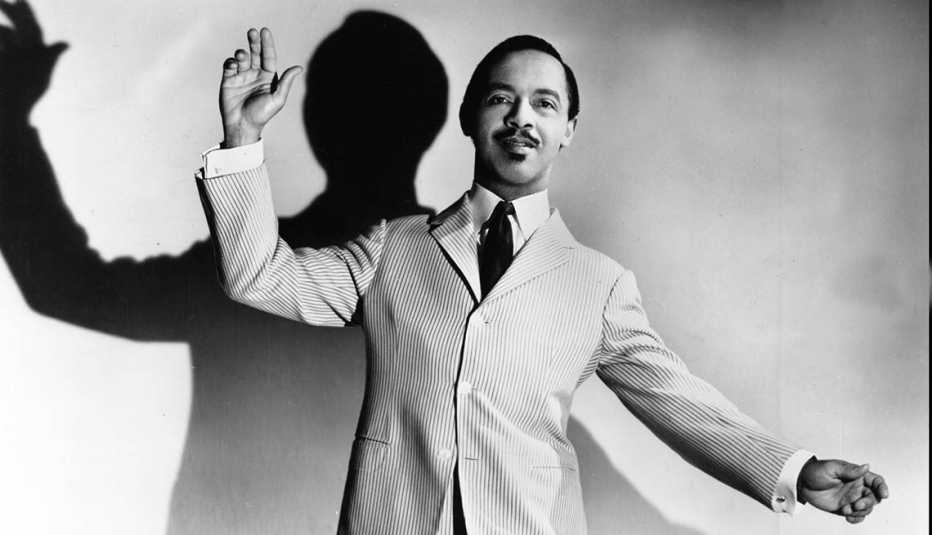AARP Hearing Center
From music, writing and acting to journalism, sports and activism, these talented Latinos of African descent have shaped the way we see the world. Here is a gallery of some of the most influential Afro-Latinos over the years.
Govind Armstrong


Born in Los Angeles in 1969, Govind Armstrong spent his childhood there and in Costa Rica, his mother’s native country. It was in Costa Rica, while helping out in the kitchen at home, that his passion for cooking emerged. He brought his love of Latin American cuisines to his creations in the U.S. and is an advocate for the use of fresh ingredients from local producers in his dishes. Armstrong is the executive chef of 8oz. Burger Bar — with five restaurants in the U.S. — and author of Small Bites, Big Nights. He’s been featured in People and O, the Oprah Magazine, and in the TV shows Top Chef and Iron Chef America. In recent years, he has opened the restaurants Post & Beam in Los Angeles and Willie Jane in Venice, California.
Martina Arroyo


One of the first Black opera singers, Martina Arroyo, the daughter of a Puerto Rican father and an African American mother, was born in Harlem in 1937. In 1958, Arroyo made her Carnegie Hall debut and won auditions for the Metropolitan Opera in New York. She went on to perform on stages such as the Vienna State Opera and Milan’s La Scala. As a lirico-spinto soprano, Arroyo dramatically portrayed Verdi heroines (the core of her repertoire), as well as performing in operas by Mozart, Puccini and others. In 2003, she established the Martina Arroyo Foundation and supports new generations of opera singers.
José Celso Barbosa


Born in 1857 in Bayamón, Puerto Rico, José Celso Barbosa was renowned as a physician and a politician. His life spanned historic moments: from Spanish colonization, slavery and abolition to emancipation and the Spanish-American War. Barbosa studied medicine in the United States. After graduating with honors from the University of Michigan with a medical degree, he returned to his homeland and set up his practice — even though the Spanish government at first didn’t recognize his degree because it wasn’t from a European university. Regarded as the father of the Puerto Rican statehood movement, Barbosa became a tireless advocate for Puerto Rico’s annexation to the United States. He thought it would be the most effective way to free the island from Spanish colonialism. In 1899, he founded the Republican Party of Puerto Rico, and in 1907, he started the island’s first bilingual newspaper, El Tiempo. Barbosa’s thoughts on political and social reform, civil and labor rights, suffrage and Republicanism were published in several important newspapers of the day. He died in San Juan in 1921. His birthday, July 27, is an official holiday in Puerto Rico.
Julia de Burgos


A civil rights advocate for Afro-Caribbean women, Julia de Burgos was a Puerto Rican journalist and poet. She was born in 1914 in Carolina, Puerto Rico, and died in New York in 1953 at age 39. Although de Burgos left Puerto Rico when she was 25 and never returned, her nationality and identity were always part of her work. She wrote about the island’s colonial past, feminism, social justice and the consequences of slavery. De Burgos dreamed of a more broad-minded Puerto Rico than that of the 1930s when its intellectuals expressed ideas about identity that overlooked the issues of Puerto Ricans of African heritage. She received awards from the Institute of Puerto Rican Literature and an honorary doctorate from the University of Puerto Rico. Her feminist ideas continue to influence contemporary women authors.
Roberto Clemente


The first Latino player to be inducted into the U.S. Baseball Hall of Fame, Roberto Clemente was born in 1934 in Puerto Rico. After graduating from high school, he began his baseball career playing for a local league, the Cangrejeros de Santurce. He was recruited by U.S. teams, and in 1954, Clemente signed a contract with the Pittsburgh Pirates and became one of the team’s greatest legends. In late 1972, Clemente became the first Latino player to reach 3,000 hits. He died that year at 38 when his plane crashed while on a humanitarian mission to Nicaragua.
Rosa Clemente


Rosa Clemente was born in the Bronx in 1972. In 2008, Clemente, who is of Puerto Rican ancestry, ran as the vice presidential nominee for the Green Party on a ticket with Rep. Cynthia McKinney. They became the first African American female political figures to participate in a U.S. presidential election. Clemente founded Know Thyself Productions, a media consulting firm that works on community advocacy, justice in the media, voter participation among marginalized young people, intercultural relationships between Black and Latino people and human rights issues. She was associate producer of Judas and the Black Messiah, a 2021 Oscar-winning film.










































































